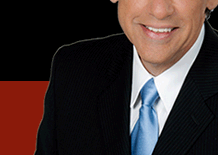|
Tag Team
As we continue our examination of anchoring, it occurs to
me that it is considerably harder to talk about single anchor
performance than it is about anchor teams, so I will leave
single anchor observations for a future installation.
In two person conversation, a listener’s response typically
comes organically from what is said by the first person.
The content of the second person’s comments inspires
a follow-up by the first person, and so the conversation continues.
The addition of a written script artificially circumvents
this process. Each person speaks when the script indicates
they should speak, not when the intellectual content or emotional
message inspires them to speak. The process of training anchor
teams, then, is in trying to construct an unspoken language
that lets them know when the normal, organic process would
inspire a response, and placing the artificial construct of
the script over it.
In short, the idea is to mimic the process of listening and
responding that is so natural for our normal speech and try
to make it appear that that is what is happening in the course
of reading a script.
I know this seems complicated, but here is an exercise to
build that sense of unspoken language.
Taking Focus
1. Anchor “A” begins to describe an image he is
holding -clipped from a magazine for example, without letting
anchor “B” see the image.
2. When anchor “B” feels the inspiration to speak,
and anchor “A” gives her the opening, anchor “B”
dives in with a description and explanation of her own image.
3. The descriptions can be extraordinarily detailed - size
and shape of the image, colors, composition, emotional content,
hidden messages, etc. Each is trying to get their description
of this image to an unseen audience while acknowledging the
participation of the other anchor.
Whenever there is a pause or an opening, the other anchordives
in with his or her description.
4. The anchors work to not interrupt each other, to not step
on each other’s description, but to really try to get
their description out. If one anchor succeeds in taking advantage
of a pause in the description to begin her own description,
the other anchor has to graciously wait for his opening to
continue his own description.
5. Each anchor has to acknowledge what the other anchor is
saying, but transform their acknowledgment into their own
description process. For example: “Well, Linda, that
color blue that you describe is exactly what my image shows.
There is a large blue building in the upper right...”
etc.
6. Each time the anchor “takes focus”, they are
concentrating on smooth, elegant transitions, not clunky ones
like “Now I’m going to talk...” or “Ok,
my turn...”. What the coach is looking for is the smooth
and elegant process of interweaving descriptions, that mimic
the natural process of conversations. This focusses on so
much on the words and sentences that would the normal part
of any script, but the underlying process of contributing
to an ongoing conversation, transitioning from one to the
other, but concentrating on what each one has to accomplish
individually.
You are going to have to take this on faith for the time
being. This exercise undoubtedly seems peculiar for a serious
journalist. After all, we are supposed to be efficient in
getting the facts out. However, understanding the process
of taking focus begins to turn the process into a deeper two
person performance and away from the superficial recitation
of facts that many young anchors find themselves doing.
In the next installment, we’ll continue with these two
person anchor interviews. Individually, to are merely interesting.
Taken as a whole, they can make a profound difference in your
performance. Keep breathing!
|

















